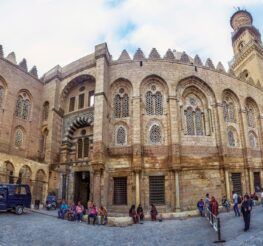The Egyptian Novels That Made It To The IPAF’s Longlist
Arabic Literature Belal Fadl Cairo Marquette Egyptian Literature Ezzedine Choukri Fishere Farah's Story International Prize for Arabic Fiction IPAF 2022 longlist literature Mohamed Tawfik Mother of Mimi Tarek Imam The Whisper of the Scorpion
Nada Medhat
In late January, the International Prize for Arabic Fiction announced the novels nominated for its longlist. The International Prize for Arabic Fiction (IPAF) is considered the most prestigious literary prize in the Arab world, often referred to as the “Arabic Booker” due to its importance and distinguished place. This year, the prize celebrates the ‘revival and development of the Arabic novel.’
Impressively, the lead lies with Egypt, with four Egyptian novels making it to the list of 16. Admirable and worthy of celebration as it still is, it remains factual that it’s in no way a new achievement. Egypt is often the leading country with the most entries in either the long or the shortlist, which isn’t surprising when you consider the fact that the first two awards in 2008 and 2009 were awarded to Egyptian novels, being Bahaa Taher’s Sunset Oasis and Youssef Ziedan’ Azazeel respectively.
Hopefully, this year will be another win for Egypt!
Mother of Mimi by Belal Fadl
Even if you’re not a reader, Belal Fadl still might be your favourite writer! Most of the iconic cinematic pieces that made it to all of our favourite family movies lists are written by him. ‘El Basha Telmeez’, ‘Awdet El Nadla’, ‘Fe Mahatet Masr’, and ‘Khalty Faransa’ are a few items on his filmography of over 18 films, all of which topped the Egyptian box office. His success as a screenwriter illuminates why this novel is remarkable enough to make it to the longlist. It’s not just his cleverness as a storyteller or skill as a writer, but also his sharp eye regarding society, the good in it as well as the bad, and all the grey areas in between. Also, it’s his ability to portray it authentically and philosophically, but not without humour, that cements this success.
The novel follows a university student who leaves his home city, Alexandria, to study in Cairo and rents a room in one of Cairo’s less prestigious areas. It’s a heartfelt, humorous, and sombre exploration of this corner of society.

Farah’s Story by Ezzedine Choukri Fishere
A former nominee, Ezzedine Choukri Fishere’s books are no strangers to the IPAF, as Intensive Care was long-listed in 2009, and Embrace on Brooklyn Bridge short-listed in 2012. Farah’s story is his eighth novel, and it’s the first that adopts a woman’s point of view and voice. The book follows Farah, whose entire life unravels in the span of a day: she destroys her home, leaves her husband, abandons her mother in a home, and forcefully stops her daughter’s wedding. What appears to be unfounded cruelty is a woman’s attempt to find her true self in the rubble that has become her life. It’s complex and true to its voice.

Cairo Maquette by Tarek Imam
Tarek Emam’s first experience with the IPAF was through the annually held “Nadwa” writers’ workshop for younger writers from the Arab world in 2010. He returns more than a decade later, but this time to be long-listed for his genre-defying novel, Cairo Maquette. Touched by Magical Realism and flirting with Fantasia, Cairo Maquette portrays Cairo with new, fresh eyes. The novel takes place across three different periods: the past, the 2011 revolution; the present of 2020; and the future in 2045. The structure and the Fantasia element allow Emam to delve into the cultural, social, and political transformations of the capital. The prose is striking with its complex and poetic flow, fitting a novel like this one.

The Whisper of the Scorpion by Mohamed Tawfik
The celebrated author’s latest novel adds to the complexity and diversity that’s permeated through the whole longlist, not just of Egypt’s entries. Of the historical fiction genre, the story takes place in the 1920s and follows a fictionalised reconstruction of the real, historical expedition taken by Ahmed Hassanein (who would later become royal chamberlain), and British explorer and travel writer, Rosita Forbes, to the oasis of Kufra in Libya. Typical of the genre, the setting here is crucial to the themes and character portrayals. The 1920s in this novel are coloured by both the global and Egyptian social and political transformations; a time irrevocably changed after the 1919 revolution and First World War, as well as the then-new feminist movements where women were struggling to establish their personhood.

recommended
 Arts & Culture
Arts & Culture
The Coptic Museum: The History of Egypt to the Tunes of Psalms of David
arts & culture cairo museums +4 Health & Fitness
Health & Fitness
Egyptians in the 2024 Summer Olympics
Egyptians in the Olympics Olympics +1 City Life
City Life
Weekend Guide: Bazar by Sasson, Memo, The Cadillacs, Heya Bazaar, Dou, Nesma Herky & More
Concerts The Weekend Guide +2 Arts & Culture
Arts & Culture

